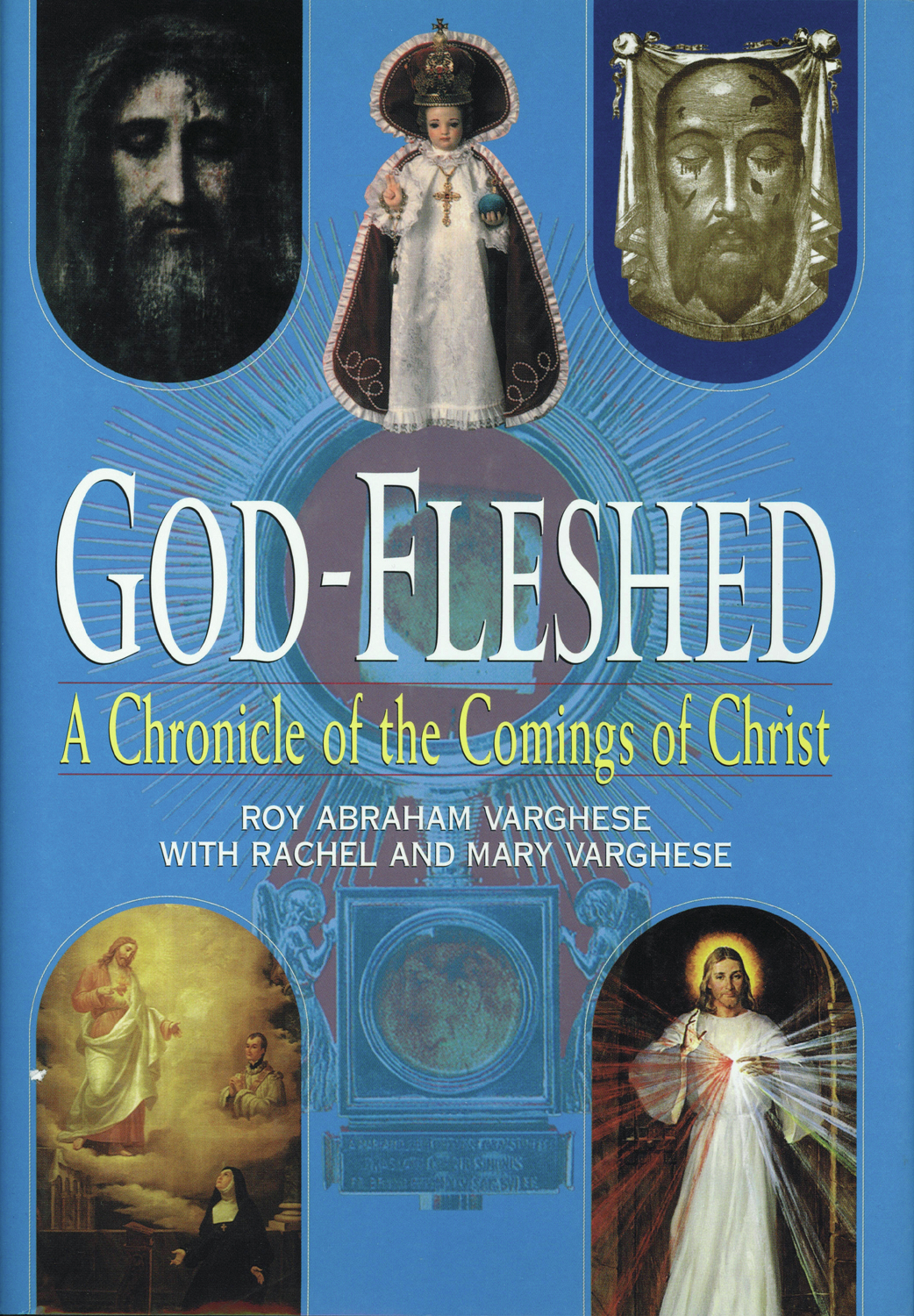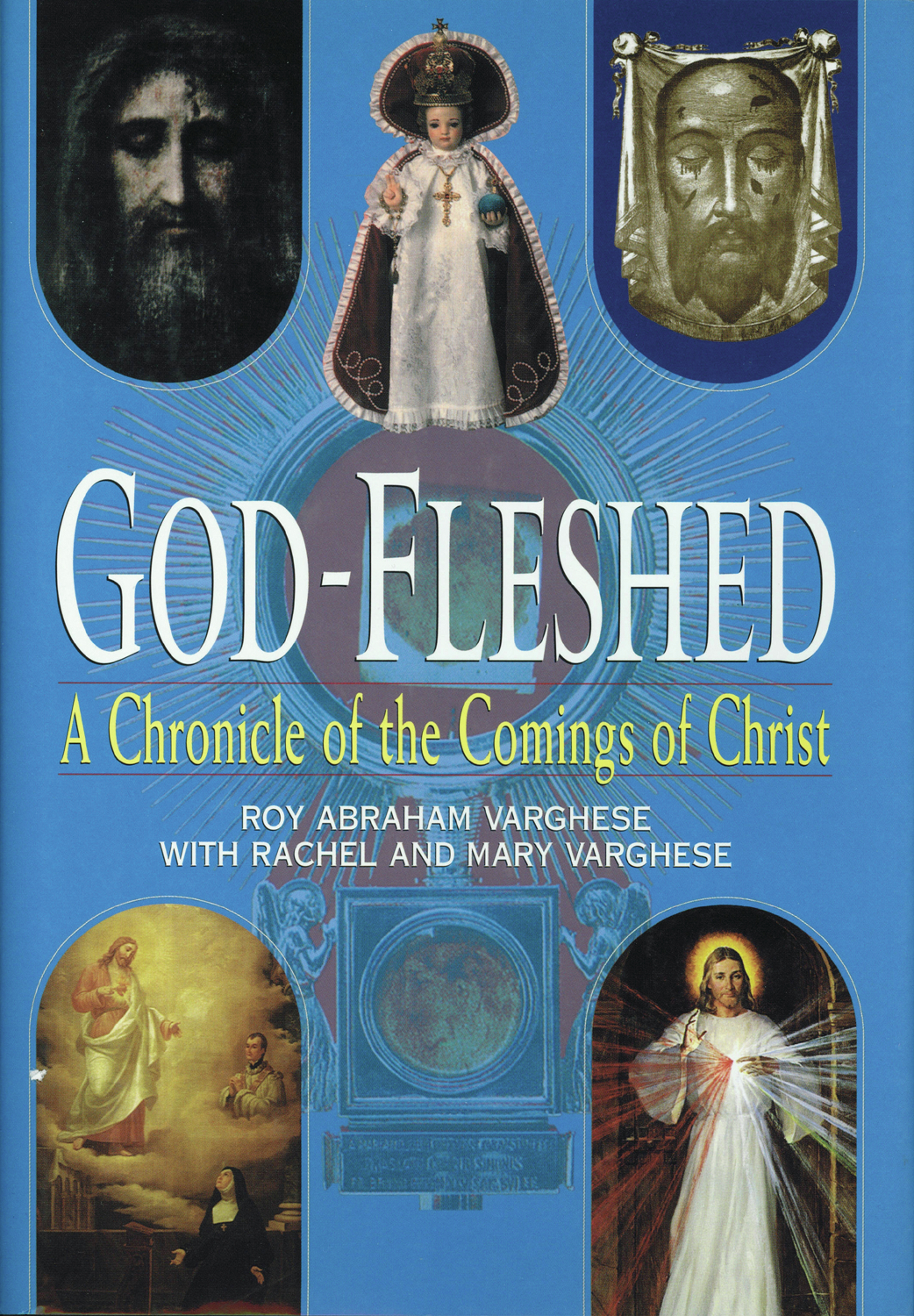- Title: God-Fleshed
- Subtitle: A Chronicle of the Comings of Christ
- Page Count: 224
- Available Formats: Cloth (9780824518936)
- Trim Size: 7 x 10
- Publication Date: 01/03/2001
- BISAC 2 : RELIGION / Christian Theology/Christology
- Original language: English
- Retail US: Cloth (34.95)
- Retail Canada: Cloth ()
- Retail Canada: 38,95
- Review 1: Roy Varghese a Templeton Award-winning author and editor known for his works that discuss the relationship of religion to science and philosophy, takes on the strange reports of Eucharistic miracles in his upcoming book, “God Fleshed,” to be published by Crossroad in 2001. Staunchly Catholic and active in several apologetics projects, Varghese wanes that these miracles, which frequently involve the transformation of the bread and wine into flesh and blood, should not distract us from the fundamental mystery of the Eucharist, Rather, “The ultimate importance of eucharistic miracles is in drawing our attention to the fact that bread and wine actually become the Body an Blood of Christ at every valid consecration,” he writes. “Every consecrated Host is as worthy of our adoration as a Host that changes into visible human flesh.” Indeed, such miracles – regardless of whether they are reported by saints, endorsed by popes or witnessed by hundreds of the faithful – are not necessary elements of Catholic belief by any means. Like Marian apparitions, the Shroud of Turin and other such claims and alleged revelations are strictly optional matters. Catholics are free to believe or ignore these reports, and some believers have fallen into error and confusion by making such miracles far too much a focus of their faith. In his research, Varghese visited several sites of alleged miracles. The book includes the stories of wafers turned into human flesh, wine transformed into blood, Eucharistic bread preserved for centuries and visions of Jesus witnessed during the consecration. It also includes stories of saints and holy persons whose only food was the Eucharist and other miracles that transcend natural laws. “Claims of miracles of the Eucharist cannot be dismissed as hallucinations because the subjects of some of these miracles are still available for tangible observation,” he writes, nothing also that today there are still cases of Eucharistic miracles being reported, such as those involving a South Korean woman and a youg girl in Massachusetts. In the case of some of these host-to-flesh miracles, scientific analysis has proven that the product is indeed human flesh. How some of these specimens from centuries ago could retain their original characteristics despite exposure to physical, biological and atmospheric contaminants is inexplicable on a natural level. In other instances, analysis has confirmed that blood specimens had the same sero-proteic makeup of fresh blood. Although blood usually begins to decay almost immediately, blood samples in several instances have lasted for hundreds of years without any preservative. Eucharistic miracles have been reported from the days of the catacombs. St. Tarsicius was martyred in the third century for protecting the Eucharist, which is said to have miraculously disappeared when he was murdered. St. Cyprian, writing circa A.D. 258, said” “How many apostates do we behold who have met an unhappy end? This one, attempting to [received Communion] amongst the faithful, is seized by horrible convulsions. That one, striving to open the tabernacle in which the body of the Lord was preserved, sees flames issuing forth.” Miracles were also reported by Church Fathers such as St. John Chrysostom (d. 407), who reported that the Eucharist turned to stone when consumed by a heretic, as well as St. Gregory of Nazianzus (d. 389) and St. Gregory the Great (d. 604). Perhaps the best known of the eucharistic miracles is that of Lanciano, Italy. Around A.D. 700, a priest celebrating Mass prayed for divine assistance in sustaining his faith in Jesus’ eucharistic presence. The hos and wine turned to flesh and blood during the consecration. The flesh and five pellets of blood remain on display after more than 1,200 years. Samples from Lanciano were clinically studied by two Italian scientists in 1970. The concluded that the flesh is muscle issue of the hear, that both the flesh and blood belong to the human species and have identical blood types (AB), and that blood proteins and minerals are in the same proportions as that of the normal fresh blood. Other miracles where the Eucharist turned into flesh and blood include a host stolen by a woman in Augsburg, Germany in 1194, which is still preserved. In 13th-cetnruy Portugal, a woman stole a host and took it to a sorceress to make a love potion. The host began to drop blood. This prodigy is still on display in Santerem. Some contemporary miracles discussed in Varghese’s book include those of Stich, Germany (1970), and Betania, Venaezuela (1991). In both cases, samples were reportedly analyzed and found to be human blood. Since 1988, wafers have been reported to have descended form the air and turned into flesh and blood in Naju, South Korea. These transformations have been witnessed by many, and the hosts have been medically analyzed. The book contains numerous examples of consecrated hosts that defied laws of nature by rising in the air surviving fires and glowing, There are also stories of visions of Christ during the consecration. One of the most starling occurred in Regensburg, Germany, in 1258. When a priest began to doubt the Real Presence during Mass, the hand of Christ on the crucifix reached out and took the chalice away, only to return it when the priest repented. Two holy women of the 20th century, Therese Neumann of German and Alexandrina da Costa of Portugal, are among those mentioned in “God Fleshed.” These women lived by consuming no food but the Eucharist for many years, even under continuous medical observation. With such evidence, we can say with the priest of Lanciano: “O fortunate witnesses to whom the Blessed God, to confound my disbelief has wished to reveal himself in this Most Blessed Sacrament and to render himself visible to our eyes. Come, brethren, and marvel at our God so close to us. Behold the Flesh and Blood of our most Beloved Christ.” —Our Sunday Visitor


